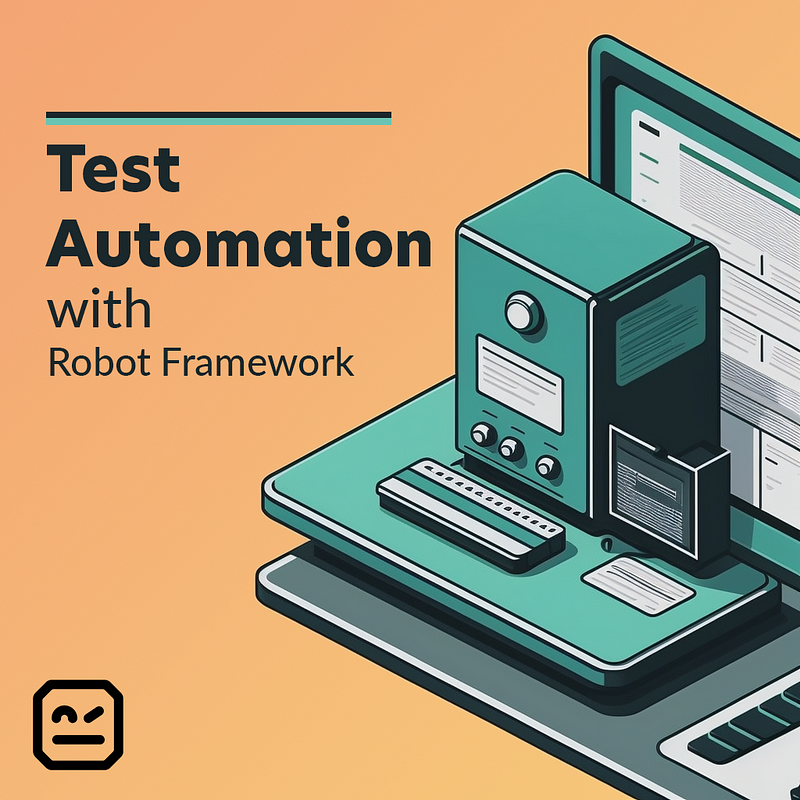Mastering Test Automation with Robot Framework: A Comprehensive Guide
Written on
Introduction to Test Automation
For professionals in DevOps and software development, mastering the automation of testing processes is essential. Utilizing well-known testing frameworks like Robot Framework has become a vital skill in the modern tech landscape. This guide will walk you through a detailed tutorial on how Robot Framework operates, how to create your initial automated tests, and an overview of its efficient scripting language.

Overview of Robot Framework
Robot Framework is a Python-based test automation tool designed to help automate diverse testing scenarios. It features a comprehensive collection of built-in libraries that support various testing capabilities. You can use Robot Framework to automate tests for databases, APIs, and even web UI testing, which we will showcase later in this article. Additionally, it integrates smoothly with other testing frameworks you may be familiar with, such as Selenium and JUnit. This compatibility allows you to run tests across different environments and platforms effortlessly.
Now that we've covered the basics, let’s dive into creating our first test.
Installation and Setup
Before we start, ensure that you have a code editor and Python installed. If you need assistance with installations, here are the download links for both Python and Visual Studio Code.
Once Python is set up, you can easily install the Robot Framework module using PIP with the command:
$ pip install robotframework
We will also need the Robot Framework Selenium library for this demonstration. Install it using the following command:
$ pip install robotframework-seleniumlibrary
Writing Your First Test
In this section, we’ll create a straightforward test to verify if an Apache server is operational on localhost port 80. Start by creating a new directory for your test files.
Next, create a new Robot Framework test file with a .robot extension and name it apache_test.robot. Open this file in your text editor and insert the following code:
* Settings *
Documentation Test for Apache web server
Library SeleniumLibrary
* Test Cases *
Check Apache is running
Open Browser http://localhost:80 Chrome
This code establishes a new test case titled "Check Apache is running." We employ the Open Browser keyword to launch the Chrome browser and direct it to http://localhost:80. If the web server is operational, it should display the homepage.
Now, let’s execute this test.
Running Your Tests
To run the test, open a terminal window and navigate to the directory containing the apache_test.robot file. Execute the following command:
robot apache_test.robot
Upon execution, you should see Chrome open, navigating to your localhost address. Robot Framework will then verify the success of this operation and generate a report for your review. A few files regarding the test output will be created in your directory. By opening report.html in a web browser, you can see the details of what transpired.

Enhancing Tests with Keywords
While we’re currently checking for a 200 response code from our web server, we lack a method to confirm that the correct content is displayed. To address this, we’ll modify our test to verify that the homepage of our application is shown.
To do this, we’ll establish a new custom keyword. Although the test could function without it, creating keywords aids in tracking test actions and allows for reuse.
Let’s adjust our original test to utilize a keyword for navigating to localhost. We’ll add a Keywords section to our Robot file and create a new keyword called "Navigate to Server" that opens Chrome similarly to our previous code.
* Settings *
Documentation Test for Apache web server
Library SeleniumLibrary
* Keywords *
Navigate to Server
Open Browser http://localhost:80 Chrome
* Test Cases *
Check Apache is running
Navigate to Server
This modification maintains the same functionality but enhances readability and reusability.
Next, let’s add functionality to verify that the loaded page is indeed the homepage of our application.
* Keywords *
Navigate to Server
Open Browser http://localhost:80 Chrome
Verify Page is Apache Default Page
Wait Until Page Contains Element xpath://h1[text()='It works!']
* Test Cases *
Check Apache is running
Navigate to Server
Verify Page is Apache Default Page
This code introduces a new keyword named “Verify Page is Apache Default Page.” It utilizes the Wait Until Page Contains Element keyword from SeleniumLibrary to ensure the Apache test page loads successfully. Given that the homepage for this server is a default Apache index.html page, it contains the heading “It works!” We instruct Robot to locate that <h1> tag using an XPath locator.
Now, our test can be simplified to merely "Navigate to Server" followed by "Verify Page is Apache Default Page."

Utilizing Variables in Robot Framework
Let’s discuss Variables, which are essential for storing and manipulating data in Robot Framework. Variables are defined in the test file's * Variables * section. For example:
* Variables *
${BASE_URL} http://localhost:80
* Keywords *
Check Apache is running
Open Browser ${BASE_URL} Chrome
In this example, we've replaced the static call to localhost with a variable named ${BASE_URL}. This way, we can use the variable across multiple tests, enhancing maintainability.
That concludes our introduction! You’ve successfully created your first test using the Robot Framework for automated testing.
Thank you for reading. If you found this helpful, I frequently publish DevOps articles on Medium. Consider checking out the following recommendations for further insights.
The first video titled "RoboCon 2024 - Mastering Best Practices with the Robot Framework Style Guide" explores effective strategies and guidelines for utilizing Robot Framework effectively.
The second video, "Robot Framework Tutorial Episode 5 - Test Case Example," provides a hands-on demonstration of writing test cases using Robot Framework.